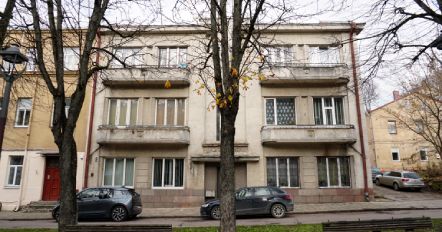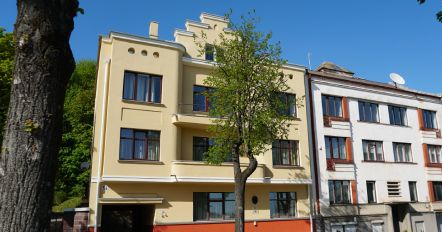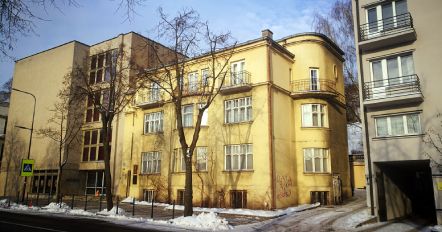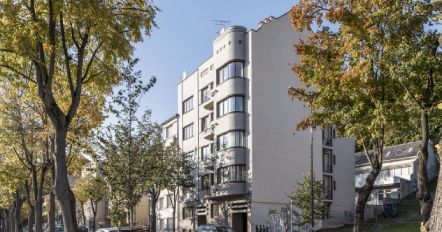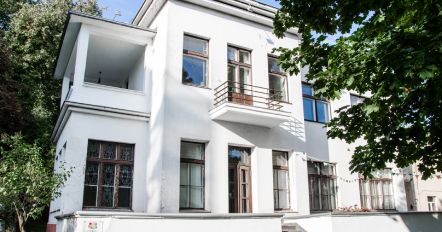Ambasados ir konsulatai
2020 December 3
Marta Engelman started building a two-storey brick house designed by Moisijus Segalovskis in 1911, having bought a parcel of land with the property from its previous owner Antanas Rabašauskas. In 1912, the house was already occupied and rented out. When it was built, the buildings closed off an inner courtyard, which was then accessed via an entry point and a garden.
2020 October 6
Today, a sign hangs on the house standing on K. Donelaičio Street, marked with the number 45. It marks the place of the Consulate of the Swiss Confederation. It was working here from 1938 to 1940.
2019 December 15
Do you live in this house? Or do you know the stories associated with it? – Tell us! This assistance is invaluable for Kaunas and Kaunas District as a contemporary European Capital of Culture 2022 and for those who want to know more about it. Let's share our stories about architecture!
2019 December 15
A luxury residential house reminiscent of typical semi-detached houses in the major cities of the United States, was built in 1930 by engineer Jonas Andriūnas.
2019 March 18
In this compact house belonging to the physician Nadežda Nagornienė each floor had an apartment for people engaged in private professional practice. The apartments had professional rooms and waiting rooms to which there were separate entries from the staircase. The latter also had service entrances directly to the kitchens. Entry to the house was from a driveway. The attic apartment on the roof had a large terrace spanning the whole width of the house.
2019 February 5
This house was built for the famous painter and chairman of the Lithuanian Riflemen association Antanas Žmuidzinavičius. At first it had two floors; but in 1938, a third one was added: there the artist set up his studio. The family lived on the second floor; the first was rented out.
2019 February 4
One of the earliest examples of a functionalist aesthetics in Kaunas, this building has a particularly laconic exterior of severe geometricized forms, with a clear delineation of spaces and planes and a distinct rhythm of elements. The kernel of the complicated plan is constituted by original oval-shaped halls. The purpose of the building was manifold: the first and third storeys had two five-room apartments; the second contained not only the owner`s apartment, but private suites in which he practiced internal medicine and Dr. Girša Elkes practiced ophthalmology. In one of the rented apartments the first Montessori kindergarten in Lithuania was established; from 1936 to 1940 the building also housed the Finnish consulate.
2019 February 3
Owned by Kazimieras Škėma, a famous lawyer, this house had five floors, which in the interwar years was a rarity. During its construction the owner hat to negotiate hard in order to get its height approved by the municipality`s building commission, since it diverged noticeably from general height level of the structures on V. Putvinskis Street. Each floor contained a five-room apartment. Apartments in this house were rented by the Swedish and Czechoslovak legations. In 1933 on the slope of the courtyard a three-storey auxiliary building was built to house the garage, the drivers` quarters, and glazed orangery on the top floor.
2019 February 3
The nunciature was the first and probably only building designed specifically for a legation. The Vatican`s envoy would have enjoyed a good atmosphere here not only for representing and working but also for living and relaxing. The first storey had a chancellery, an office room, a parlor, a dining room, and a "winter garden", separated by sliding doors. The second storey had sleeping rooms, another office, and a chapel. However, because of internal political troubles the nuncio did not take up residence here. In 1932 the building was accommodated to a children`s hospital.



